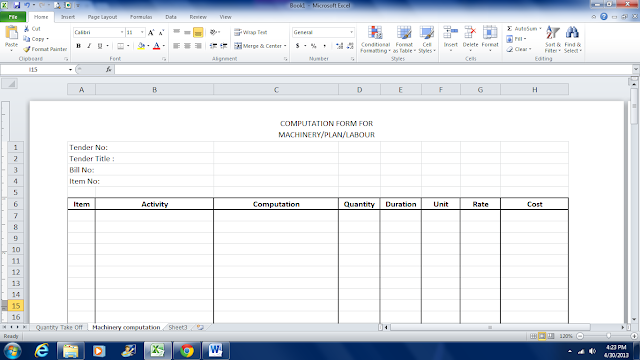Contract document is a very important document that every personal
cannot afford to missed out. Failure to understand the content of this document
can lead to essential legal aspect of a contract which in the end will lead to
major financial losses. In view of this consequence, it is good to first
familiarised ourselves with the standard form of contract. The reason why this
is important mainly due to that all contract will be prepared base on standard
form of contract. Any extra requirement or specification normally will be added
in as special condition of contract.
Base on my observation, most of the personal especially contractor,
always neglect this aspect during the tendering process. This missing stage in
tendering always resulted to contractor under price or under estimated the
actual construction cost. If only this practice had not been skip, there will
be lots of unnecessary losses to bare by parties involved. Under priced or
under estimated always happened with the lump sum contract where bill of quantity
is not provided in the tender document. Usually lump sum contract will only
mention on the major works that need to be completed. for example, there is
item describe as preliminaries and general, however it was not been elaborate
further. For instance, there is no detail item spell out in the bill of
quantity such as compliance to DOSH (Department of Occupational Safety and Health) act or environmental act or also compliance
to local statutory and regulatory. In actual fact all of this had been spelled
out in the standard form of contract.
As construction personal all of the standard form of contract
contents and also special condition of contract just cannot been separate from
the tendering process. For our further reference please refer to our respective
nation or department that we deal with for the standard form of contract. The
standard form of contract link that I include here might be useful to us.
STANDARD
FORM OF CONTRACT.








